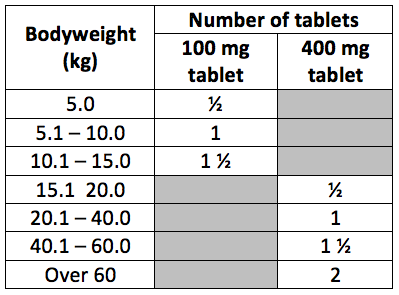What is Pexion and how does it work?
Pexion (imepitoin) is a centrally acting antiepileptic drug which acts as a low affinity partial agonist of the benzodiazepine receptor. Imepitoin potentiates the GABAA receptor mediated inhibitory effects on the neurons and thereby prevents seizures. In addition, imepitoin has a weak calcium channel blocking effect which may contribute to its anticonvulsive properties. Imepitoin differs from high affinity benzodiazepine receptor agonists (e.g. diazepam), as the lower binding affinity of imepitoin results in superior safety in long term use1.
How is Pexion given?
Give orally at an initial dose rate of 10mg per kg bodyweight twice daily, approximately 12 hours apart. The dose can be increased up to 30mg/kg bodyweight twice daily if required. Tablets can be administered with or without food, although studies suggest superior absorption in fasted dogs. The timing of tablet administration in relation to feeding should be kept consistent.
Initiate therapy using the bodyweight in kg and the dosing table below. If seizures are not adequately reduced following a minimum of 1 week of treatment at the current dose the supervising veterinarian should re-assess the dog. Assuming that Pexion is well tolerated by the dog, the dose can be increased by 50 to 100% increments up to a maximum dosage of 30 mg per kg administered twice daily. Each tablet can be halved for appropriate dosing according to the individual bodyweight of the dog. Use any divided tablet at the next administration time.
Suggested number of tablets (to be given twice daily) for initiation of treatment (10mg/kg body weight):

What if a dose of Pexion is missed?
Give the next dose at the normal time. There is no need to increase the dose.
How long does Pexion take to work?
Imepitoin is well absorbed (> 92%) after oral administration. The plasma protein binding of imepitoin in dogs is low (60 to 70%), therefore, no interaction with highly protein bound compounds is expected.
Imepitoin is rapidly cleared from blood with an elimination half-life of approximately 1.5 to 2 hours. Imepitoin is extensively metabolized prior to elimination. The majority of imepitoin and its metabolites are excreted via the faecal route so that no accumulation is expected in renally impaired dogs.
Does Pexion have any side effects?
The following mild and generally transient adverse reactions have been observed in pre-clinical and clinical studies (in order of decreasing frequency): polyphagia at the beginning of the treatment, also hyperactivity, polyuria, polydipsia, somnolence, hypersalivation, emesis, ataxia, apathy, diarrhoea, prolapsed nictitating membrane, decreased sight and sensitivity to sound.
A mild elevation in plasma creatinine and cholesterol levels has been observed in dogs treated with imepitoin; however these did not exceed the normal reference ranges and were not associated with any clinically significant observations or events.
What should I do in case of a drug overdose?
Pexion has a high margin of safety in dogs. In cases of repeated overdose with 5 times the highest recommended dose, neurologic and gastrointestinal-related effects have been noted. At such doses, the signs are not usually life threatening and generally disappear within 24 hours if symptomatic treatment is given.
Neurologic effects may include ataxia, loss of righting reflex, decreased activity, eyelid closure, lacrimation, dry eye, and nystagmus. Gastrointestinal effects may include salivation, vomiting and white material (tablet residues) in faeces.
When should I not be using Pexion?
This product is contraindicated in dogs that have demonstrated hypersensitivity to imepitoin, in dogs with severely impaired hepatic function, severe renal or severe cardiovascular disorders. Clinicians should access the benefit/risk when using Imepitoin during reproduction, pregnancy or lactation. Careful consideration should be given before deciding to switch a stabilized dog on to imepitoin from a different treatment. When transition between different antiepileptic therapies is medically required, this should be done gradually and with appropriate clinical supervision.
For any further information or clarification about Pexion, please call Boehringer Ingelheim Technical Services Veterinarians on 1800 038 037


